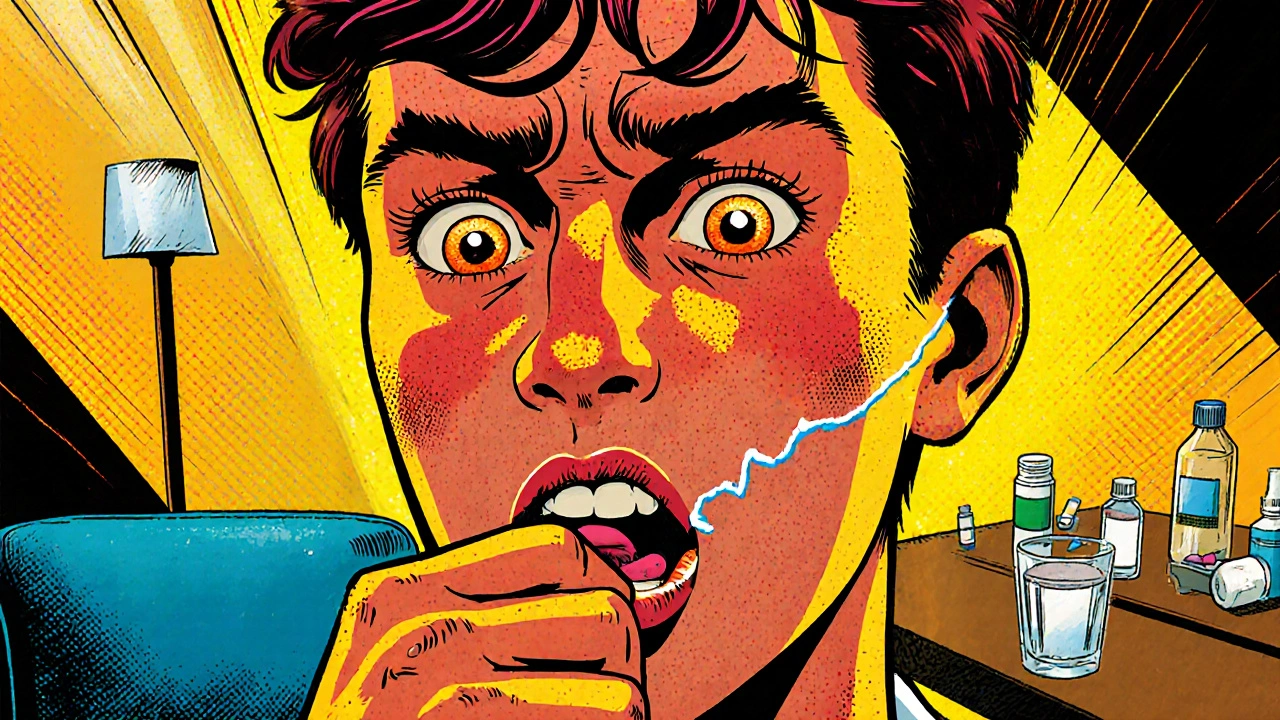
Amitriptyline Overdose: Recognizing Signs, Symptoms & Emergency Treatment
Learn how to spot early and severe signs of amitriptyline overdose, what immediate steps to take, and the medical treatments that can save a life.
When dealing with tricyclic antidepressant toxicity, a potentially life‑threatening condition caused by excess levels of TCA drugs in the body. Also known as TCA overdose, it often involves medications like Nortriptyline, a commonly prescribed TCA for depression and neuropathic pain or Amitriptyline, another classic TCA with strong anticholinergic effects. These drugs belong to the broader class of tricyclic antidepressants, which act by blocking the reuptake of norepinephrine and serotonin, and their toxicity shares mechanisms such as cardiac sodium channel blockade and central nervous system depression.
Tricyclic antidepressant toxicity requires immediate medical attention because the heart, brain, and breathing system can all be affected at the same time. The first semantic triple is: TCA overdose causes cardiac arrhythmia. The second: sodium channel blockade leads to slowed heart conduction. The third: anticholinergic overload produces dry mouth, blurred vision, and urinary retention. Together these connections explain why patients can present with a rapid pulse, low blood pressure, confused mental state, and seizures. The risk rises steeply when the ingested dose exceeds 10 mg/kg for Amitriptyline or 25 mg/kg for Nortriptyline, but even lower amounts can be dangerous in children or people with heart disease.
First responders look for three hallmark signs: widened QRS complex on the ECG, seizures, and severe hypotension. The fourth semantic triple: ECG widening indicates sodium channel toxicity, and the fifth: seizures signal central nervous system involvement. If any of these appear, clinicians start with activated charcoal (if the patient is alert) and give intravenous sodium bicarbonate to narrow the QRS. Monitoring includes continuous heart rhythm, blood pressure, and oxygen saturation. In severe cases, intubation and cardiac support become necessary.
Besides Nortriptyline and Amitriptyline, other members of the TCA family—such as Desipramine, Imipramine, and Clomipramine—share the same toxic profile. Each of these drugs can be marked as a related entity, but we keep the microdata to the three most common ones for clarity. The metabolism of TCAs relies heavily on liver enzymes CYP2D6 and CYP2C19; genetic variations in these enzymes can slow clearance and increase toxicity risk. This is the sixth semantic triple: CYP2D6 deficiency increases TCA plasma levels.
Management doesn’t stop at heart rhythm control. Seizure control often uses benzodiazepines, while hypotension may require fluid resuscitation and vasopressors like norepinephrine. If cardiac toxicity persists, physicians may consider lipid emulsion therapy, a newer rescue method that works by pulling the drug out of the bloodstream. The seventh triple: lipid emulsion reduces free TCA concentration.
Long‑term follow‑up is essential because survivors can develop delayed neurological issues or persistent cardiac abnormalities. Patients are usually referred to psychiatric services for safer antidepressant alternatives, such as selective serotonin reuptake inhibitors (SSRIs) that have a much lower overdose risk. Switching away from TCAs also reduces the chance of accidental repeat overdose.
When you browse the articles below, you’ll see deep dives into each of these points. One piece breaks down the specific signs of Nortriptyline poisoning, another compares the emergency protocols for Amitriptyline versus other TCAs, and a third walks you through the latest guidelines for using sodium bicarbonate in the field. Whether you’re a medical student, a practitioner, or just someone wanting to understand why TCA overdose is so dangerous, the collection offers clear, practical information you can act on.
Take a look at the resources ahead to get a full picture of how tricyclic antidepressant toxicity presents, how to recognize it quickly, and which treatments save lives the fastest.

Learn how to spot early and severe signs of amitriptyline overdose, what immediate steps to take, and the medical treatments that can save a life.